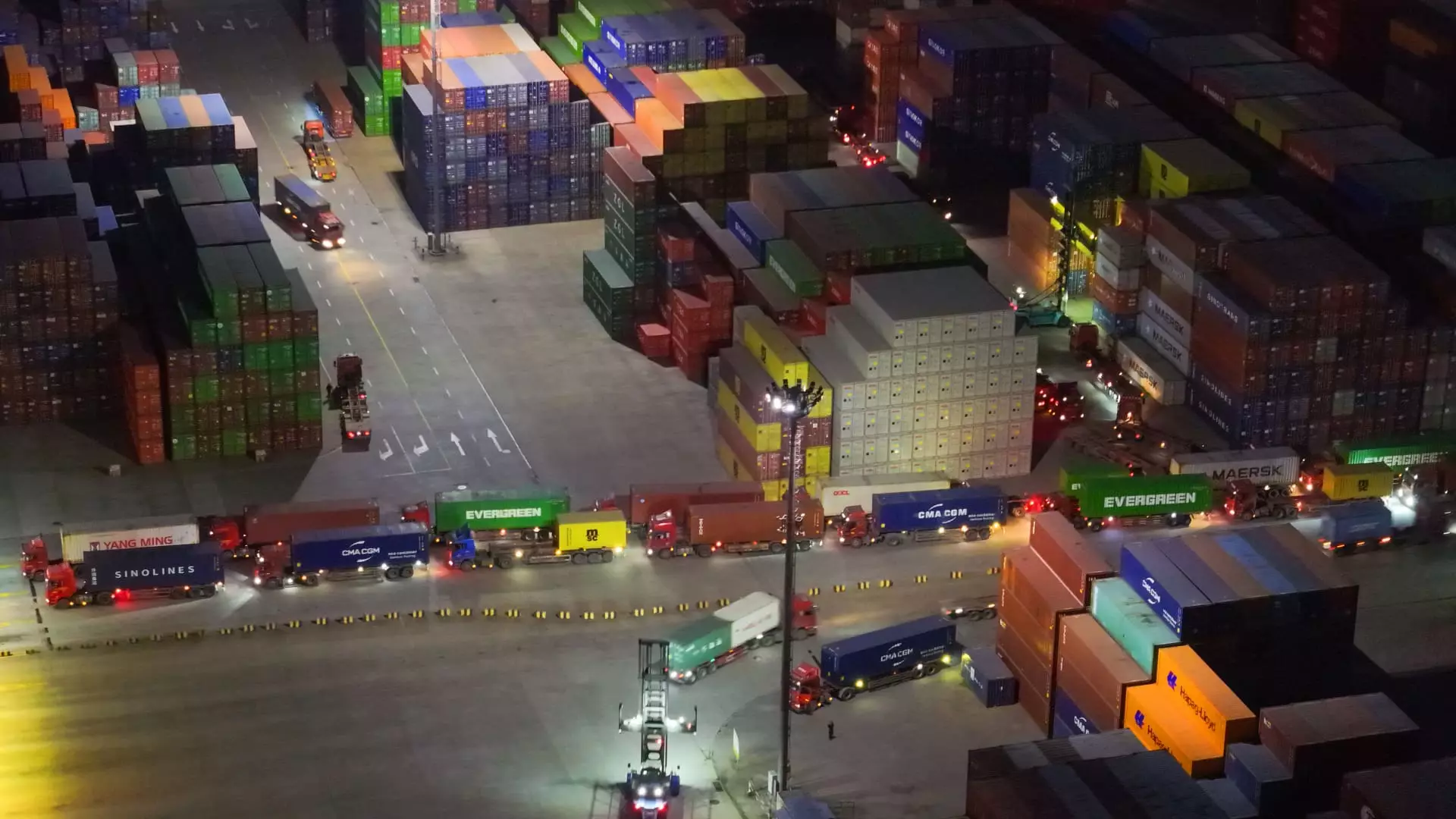The recent grim outlook for China’s economic growth has been signified by a troubling wave of predictions from leading investment firms. With Citi at the forefront, analysts now anticipate a GDP growth of just 4.2% for the year, marking a downward revision that reflects the escalating tensions between China and the United States. The trade war, increasingly characterized by tit-for-tat tariffs, paints a bleak picture of an economy that might soon be tethered to stagnation rather than growth. Historically, such rapid declines indicate deeper structural issues, hinting at potential chaos in the nation’s growth engine.
These adjustments in forecasts are not mere academic exercises. They symbolize a palpable fear permeating across financial institutions about the ongoing turbulence that is likely to stunt growth if conditions remain unchanged. Citi’s reasoning—that there is “little scope for a deal between the U.S. and China” —suggests that analysts foresee a long-standing impasse, diminishing public confidence in the ability of policymakers to navigate out of the current predicament. The implications are dire: Once a beacon of economic optimism, China’s growth narrative is beginning to take on the tones of despair.
The Vicious Cycle of Tariffs
The ratcheting up of tariffs—exceeding a staggering 100%—is not merely a well-documented statistic; it is a reflection of a combative relationship that threatens to erode the fabric of Chinese manufacturing and export-led growth. The latest measures, including a 50% tariff on additional Chinese goods, illustrate a broader volatility that has entered the global trade environment. This excessive taxation is poised to siphon off critical domestic investment and diminish overall consumer confidence.
Analysts argue that repercussions will cascade beyond mere GDP figures. The loss of potential market share in the U.S. will likely inhibit innovation as well, promoting a retreat from risk-taking among domestic entrepreneurs. Economically, this creates a vicious cycle; as exports drop, investment wanes, and so does job creation—a spiraling descent that could be far more damaging than the numbers alone suggest.
Echoes of Uncertainty in Domestic Markets
The uncertainty hovering over the economy is underscored by the comments from experts like Hao Zhou from Guotai Junan International, who has pinpointed diminishing visibility on future growth. The ambiguity obscuring growth prospects is haunting, exemplified by a recent report from Nomura predicting a sharp drop in exports, which had previously been stable. Such stark revisions resonate deeply within businesses—domestic investment decisions, hiring strategies, and consumer spending all influenced by this climate of uncertainty.
As companies brace for the storm ahead, it is becoming increasingly evident that the Chinese government may soon resort to monetary policies that defy the tenets of its market-oriented reforms. Recent signals indicate a likelihood of interest rate cuts or increased fiscal spending aimed at stabilizing growth. However, the question looms: will these measures prove adequate in light of external pressures? The answer may significantly impact not just China’s standing in the global economic landscape but also the broader economic environment.
The Balancing Act: Navigating Between Growth and Retaliation
As China grapples with these multifaceted challenges, the strategic calculus seems to pivot between the need for economic stability and the desire for sovereignty. Yue Su from the Economist Intelligence Unit wisely notes that today’s retaliation may appear favorable to China’s leadership despite the visible economic costs. This highlights a broader ideological battle—a nation asserting its place on the global stage amidst relentless external pressures.
Yet the longer the trade offensive lasts, the more dire the impact on core economic drivers like consumer confidence, exports, and business sentiment. In a global landscape that increasingly favors collaboration over conflict, the question remains whether China’s leadership will view short-term gains as sustainable in the face of mounting economic distress.
Glimpses of growth might emerge if policymakers forge more pragmatic approaches that prioritize cooperative efforts rather than combative posturing. However, until a notable change in strategy materializes, the realities remain stark: a troubled economic forecast looms over China, burdened by uncertainty, aggression, and self-inflicted wounds.

